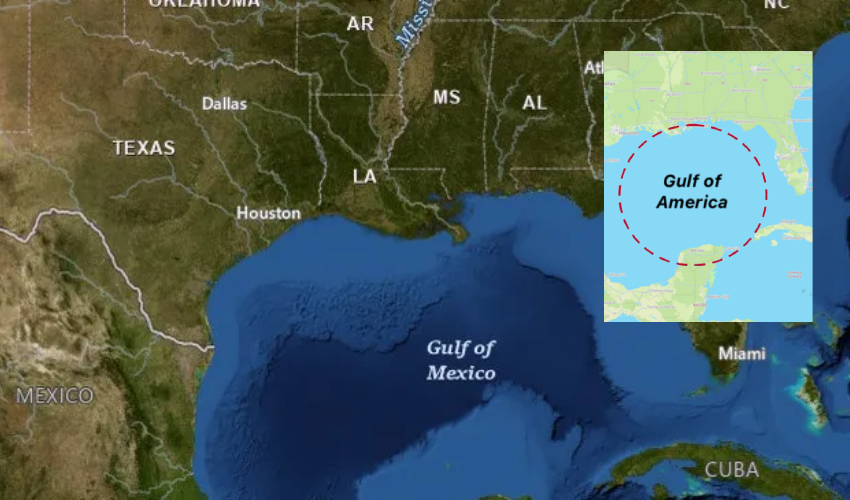Google Renames Gulf of Mexico to ‘Gulf of America’ on Maps—Sparks Controversy!
In the United States, Google Maps users will see the body of water labeled as “Gulf of America.” Meanwhile, users in Mexico will continue to see it as “Gulf of Mexico.” For everyone else around the world, both names will be displayed together to reflect the differing official designations.
Google has officially changed the name of the Gulf of Mexico to the “Gulf of America” in its Maps application, aligning with a recent decision by the U.S. government.
In a statement posted on X (formerly Twitter), Google explained that the update is part of its long-standing policy of following official government naming conventions. The change comes in response to an executive order issued by President Donald Trump, which directed federal agencies to rename the body of water. This decision was further solidified when the federal Board on Geographic Names formally approved the new designation on Monday.
Google’s move has sparked widespread discussion, as the Gulf of Mexico has been historically recognized under its original name for centuries. While some view the renaming as a routine administrative update, others see it as a politically charged decision with potential diplomatic implications.

Google has reaffirmed its policy of adhering to official government naming conventions, stating, “We have a longstanding practice of applying name changes when they have been updated in official government sources.”
The Geographic Names Information System (GNIS), which operates under the United States Geological Survey (USGS), is responsible for providing the official names used in Google Maps. This ensures that place names on the platform remain consistent with federal records and any government-mandated updates.
In addition to renaming the Gulf of Mexico to the Gulf of America, another significant change is taking place: Mount Denali in Alaska is being officially renamed back to Mount McKinley. This decision follows an executive order issued by President Donald Trump on January 20, which directed the reversal of Denali’s name to its earlier designation, honoring former U.S. President William McKinley.
Google has stated that it will implement this name change “quickly” once the Geographic Names Information System updates its records, ensuring that Maps reflects the latest official names.
Google has clarified that the name change for the Gulf of Mexico will not be universally applied in the same way across all regions. Instead, the updated name, Gulf of America, will appear differently depending on the user’s location.
According to Google, both names will be displayed in certain cases to reflect international naming differences. “When official names vary between countries, Maps users see their official local name. Everyone in the rest of the world sees both names. That applies here too,” the company stated.
This means that users in the United States will primarily see the name Gulf of America in alignment with the recent federal decision, while users in other countries may still see the original Gulf of Mexico designation. In regions where multiple naming conventions apply, both names will be displayed simultaneously to accommodate differing international perspectives.
By implementing this approach, Google aims to balance the recognition of the U.S. government’s decision while also respecting global geographic naming standards.
Google has pointed to a well-known example of its dual-name policy: the Sea of Japan, which is also referred to as the East Sea by South Korea. This body of water has been the subject of a long-standing naming dispute between Japan and South Korea. To address this, Google Maps in the United States displays the sea’s name as “Sea of Japan (East Sea)”, ensuring that both widely recognized names are acknowledged.
A similar approach will be applied to the Gulf of Mexico in regions outside the United States. While Google Maps within the U.S. will primarily display the newly designated Gulf of America, users in other parts of the world will likely see both names presented together. This dual-labeling system allows Google to reflect official government changes while also maintaining global geographic recognition and accommodating international perspectives.


Comments are closed, but trackbacks and pingbacks are open.